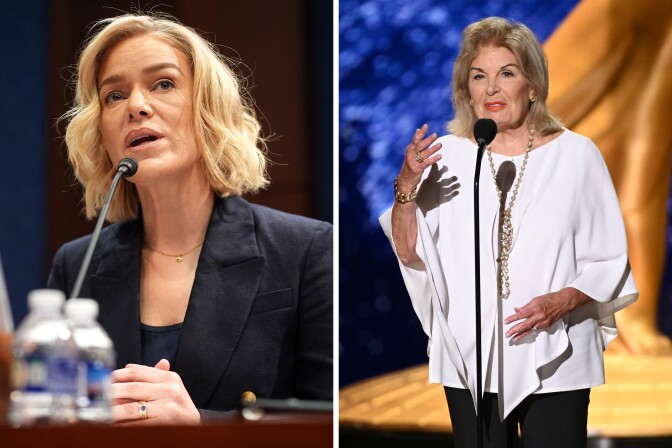From neighborhood celebrations and museum exhibitions to comedy shows and movie screenings, there are lots of fun things you can do in Southern California this Juneteenth on Thursday.
First, if you aren’t already familiar with the history of America’s newest federal holiday and how it’s been celebrated for decades in L.A. (specifically Leimert Park), you can quickly brush up with this article by former LAist associate editor Aaricka Washington.
Then, take your pick of events happening in SoCal on or around Juneteenth (Thursday, June 19):
Juneteenth Eve (Wednesday)
Wednesday, June 18, 7:30 p.m.
Bri Giger’s Prideteenth Show
The Elysian
1944 Riverside Dr., Los Angeles
COST: $16 + $4 fee; MORE INFO
This annual all-queer, all-POC variety show at the nonprofit alt-comedy theater The Elysian features live music, comedy, acting and poetry. The “celebration of Black queer power” is presented by actress, activist and comedian Bri Giger and Club Cleo.
The holiday (Thursday)
8 a.m. - noon
Black Folk Juneteenth Freedom Day Ride
Baldwin Hills Crenshaw Plaza to Leimert Park
COST: FREE, BUT REGISTRATION REQUIRED; MORE INFO
Join cyclists from all over Southern California for this second annual bike ride that “promotes Black excellence, Juneteenth, and safe cycling in one of the world's best cities.” It’s a 9-, 14-, or 19-mile group ride through central L.A. that ends at the Leimert Park Village Juneteenth Celebration.
11 a.m. - 7 p.m.
Leimert Park Village Juneteenth Celebration
Leimert Park Village, Degnan Boulevard, Los Angeles
COST: FREE; MORE INFO
Celebrate Juneteenth where many say the holiday was first celebrated in L.A. back in 1949, with live music (drum circles, jazz, and DJ sets), poetry, line dancing, health and wellness resources, and a fashion show at Sole Folks at 5 p.m.
Noon - 1:30 p.m.
Altadena Historical Society Juneteenth Celebration and Luncheon
Loma Alta Park
3330 N. Lincoln Ave., Altadena
COST: $30-35; MORE INFO
The historical society’s fourth annual Juneteenth celebration will feature a luncheon, photo exhibition, quilt drawing and an awards ceremony for scholarships awarded to local students affected by January’s Eaton Fire.
The scholarship award is named after Ellen Garrison Clark, a Black educator and civil rights activist who fought against slavery and was buried in an unmarked grave in Altadena after she died in 1892. The historical society raised funds to purchase a headstone for Clark and unveiled it during their 2021 Juneteenth celebration.
Noon - 3 p.m.
Museum of African American Art
Baldwin Hills Crenshaw Plaza
Level 2, Suite 283
3650 W. Martin Luther King Jr. Blvd., Los Angeles
COST: FREE; MORE INFO
Visit the Museum of African American Art on Juneteenth and get a free tote bag (while supplies last) when you bring in a receipt from any Baldwin Hills Crenshaw retailer. Tour the museum’s collection and share what “Freedom Is…” to you.
3 p.m. - 4 p.m.
Gallery Conversation: Costuming Black History with Sharen Davis
Academy Museum of Motion Pictures
6067 Wilshire Blvd., Los Angeles
COST: FREE WITH ADMISSION; MORE INFO
Make a trip to the Academy Museum and enjoy a conversation with Emmy Award-winning and Academy Award-nominated costume designer Sharen Davis (Watchmen, Ray, Dreamgirls) about memorable costume designs from her 30-year career.
5:30 p.m. - 8 p.m.
Repossessions and Reparations
California African American Museum (CAAM)
Figueroa Street and Exposition Boulevard, Los Angeles
COST: FREE WITH RSVP; MORE INFO
Celebrate Juneteenth with a visit to CAAM to check out all their exhibitions, but specifically on the evening of Juneteenth, for a curator-led tour with artists in person from Repossessions (Feb. 14 - Aug. 3), a group exhibition reflecting on reparations for descendants of enslaved African Americans. The event also features a panel discussion with Reparations4Slavery and The Reparations Project, moderated by guest curator Bridget R. Cooks.
8:30 p.m.
The UCB Juneteenth Improv Extravaganza
Upright Citizens Brigade Theatre
5919 Franklin Ave., Los Angeles
COST: $11.96-17.94; MORE INFO
Prepare to laugh — either in person (at the UCB Theatre) or at home (for the livestream, also available for 7 days after) — during this show made up of four teams of Black improvisors. The show is hosted by comedian Ronnie Adrian.
8:35 p.m. and 11:10 p.m.
Rooftop Cinema's Celebrating Black Cinema Series
888 S. Olive St., 4th Floor, DTLA
COST: FROM $23; MORE INFO
Check out one or both movies screening at Rooftop Cinema for Juneteenth: 1997’s Love Jones starring Larenz Tate and Nia Long, and Gina Prince-Bythewood’s 2000 film, Love & Basketball, starring Omar Epps and Sanaa Lathan. Or if Saturday works better for you, the rom-com Brown Sugar (2002) is playing at 11:10 p.m.
Beyond Juneteenth
Friday, June 20, 7 p.m. - 11 p.m.
KCRW Summer Nights @ CAAM
California African American Museum (CAAM)
Figueroa Street and Exposition Boulevard, Los Angeles
COST: FREE ADMISSION; MORE INFO
This dance party includes after-hours access to CAAM, with food trucks, beer garden and crafts for you to enjoy outside.
Saturday, June 21, noon - 4 p.m.
City of West Hollywood Juneteenth Celebration
647 N. San Vicente Blvd., West Hollywood
COST: FREE; MORE INFO
Head to West Hollywood Park for food, music, live performances, and vendors from Black-owned businesses.
Saturday, June 21, 1 p.m. - 4 p.m.
Culver City Juneteenth Celebration
Ivy Station
8840 National Blvd., Culver City
COST: FREE; MORE INFO
The City of Culver City Juneteenth celebration features food, activities for kids, and live music performances from BriJolie and Friends and Top Shelf Brass Band.
Sunday, June 22, 10 a.m. - 4 p.m.
Juneteenth in South LA: Team Tennis Tournament & Beginners' Clinic
Jackie Tatum Harvard Recreation Center
1535 W. 62nd St., Los Angeles
COST: FROM $17.85; MORE INFO
For tennis lovers and newbies to the sport alike, All-Love Racquet Club and Fortune Tennis are organizing a tennis clinic and tournament, complete with music, food and backyard games.











